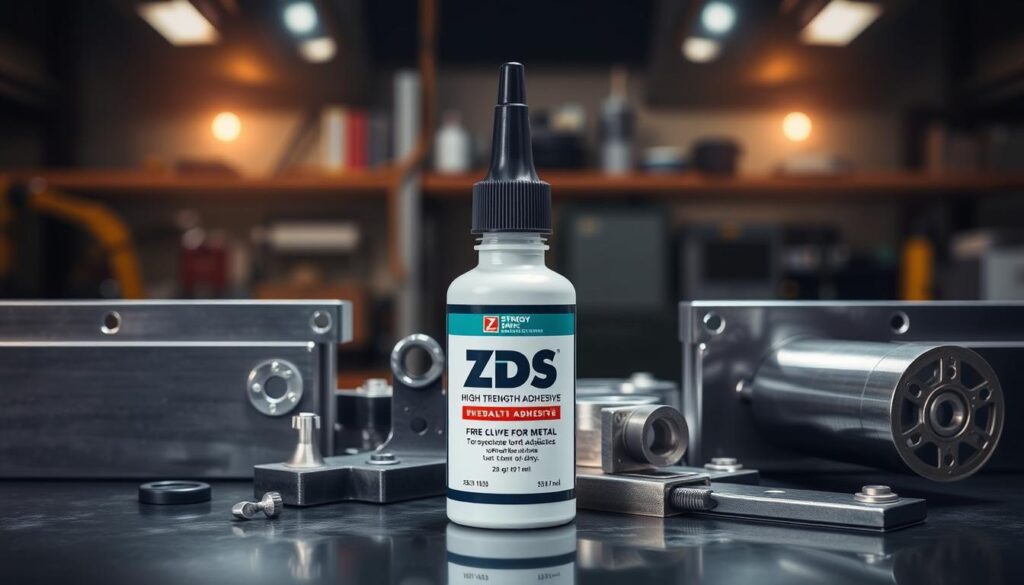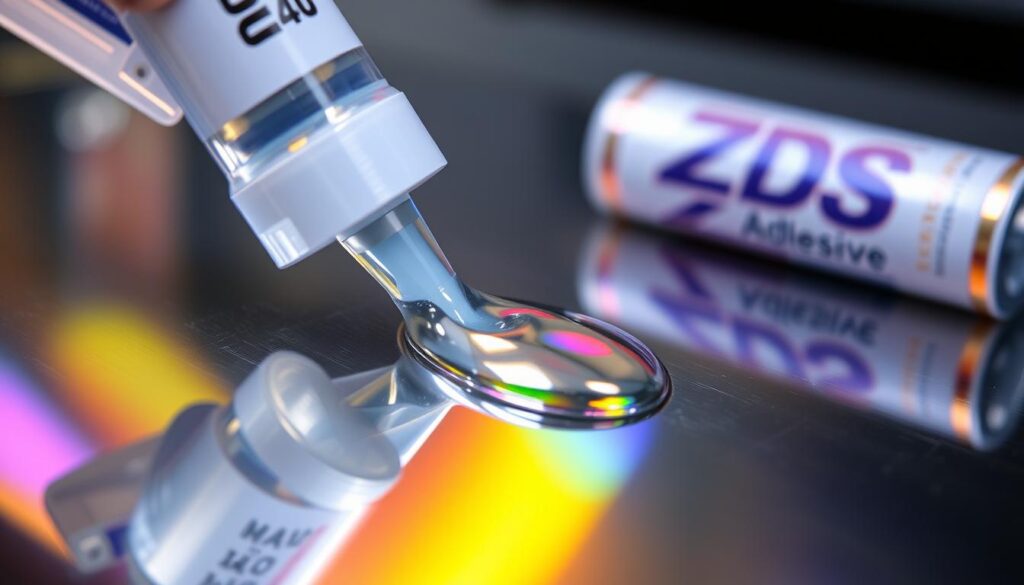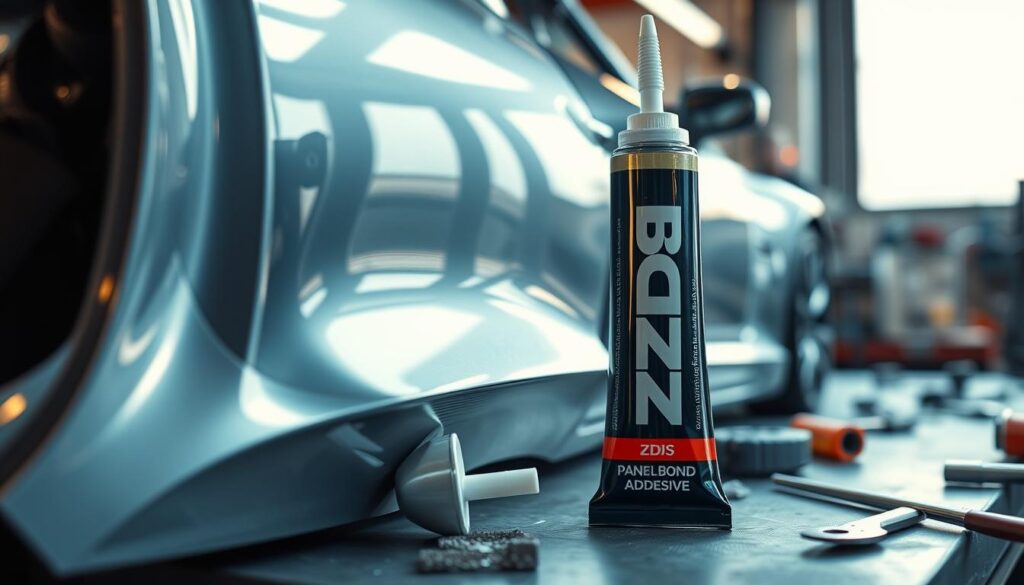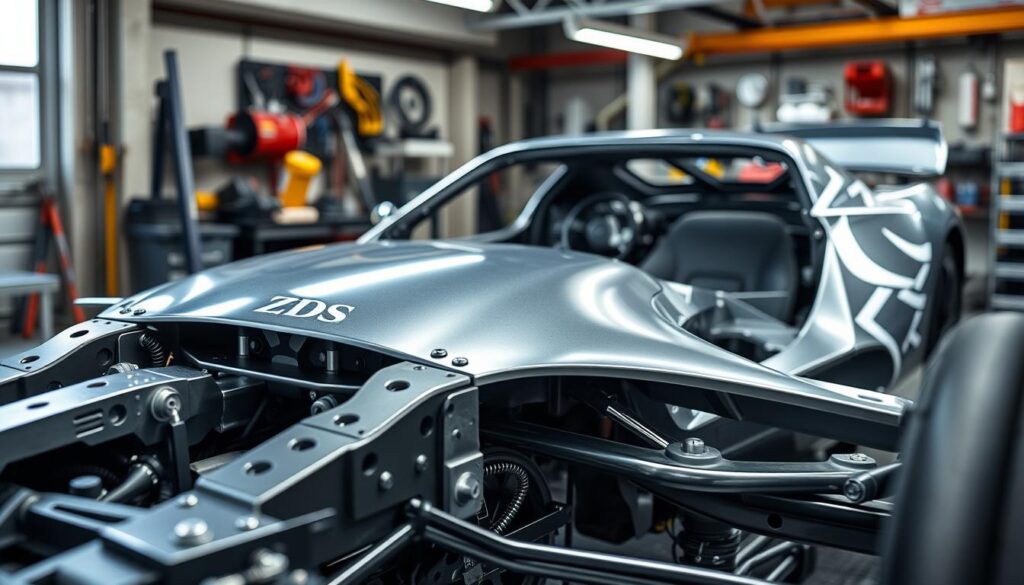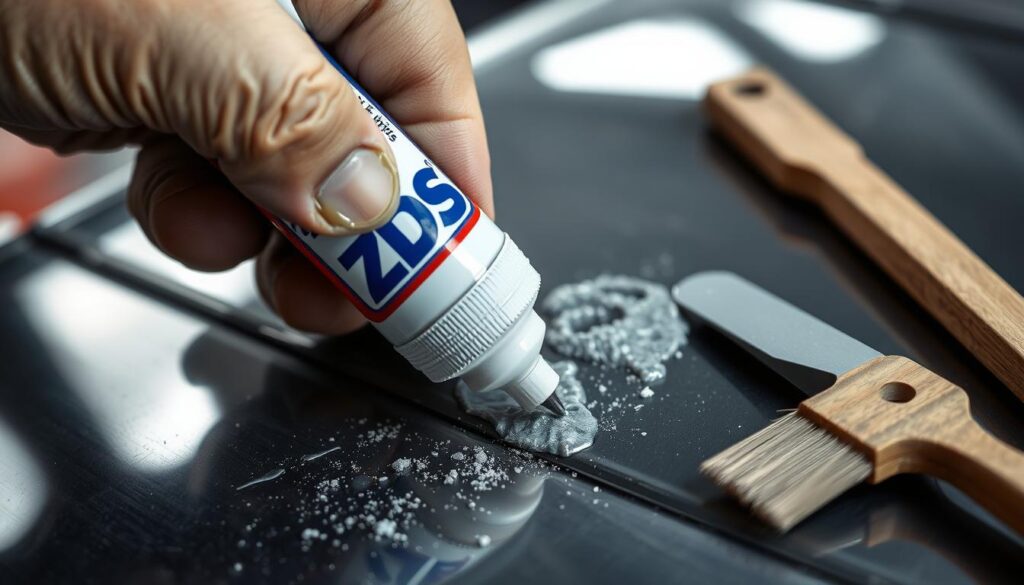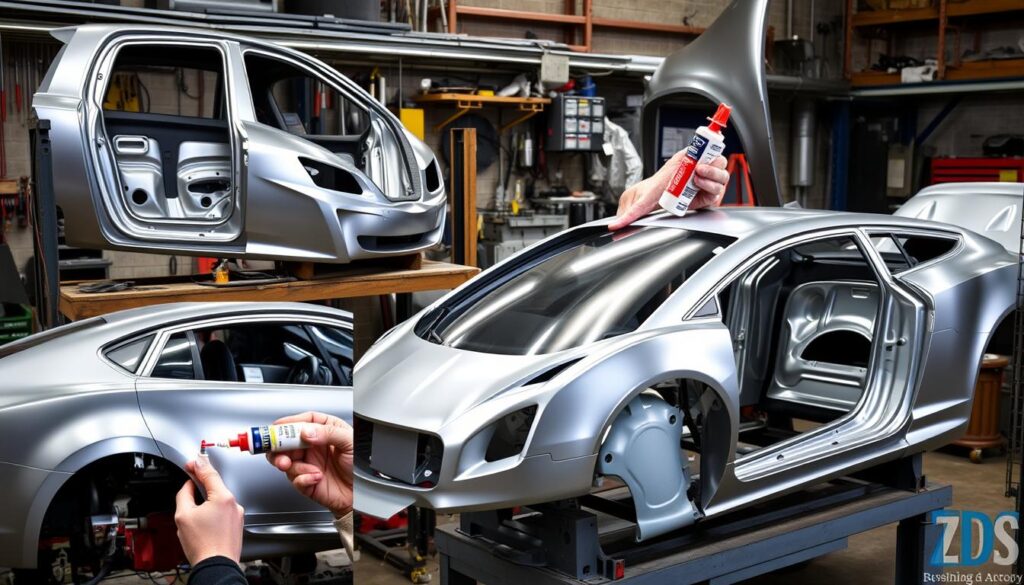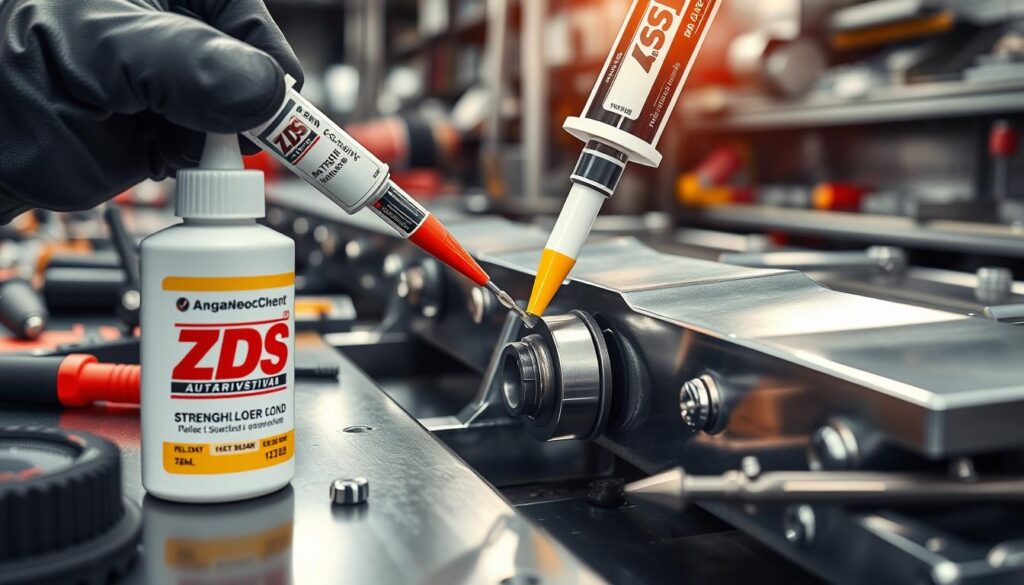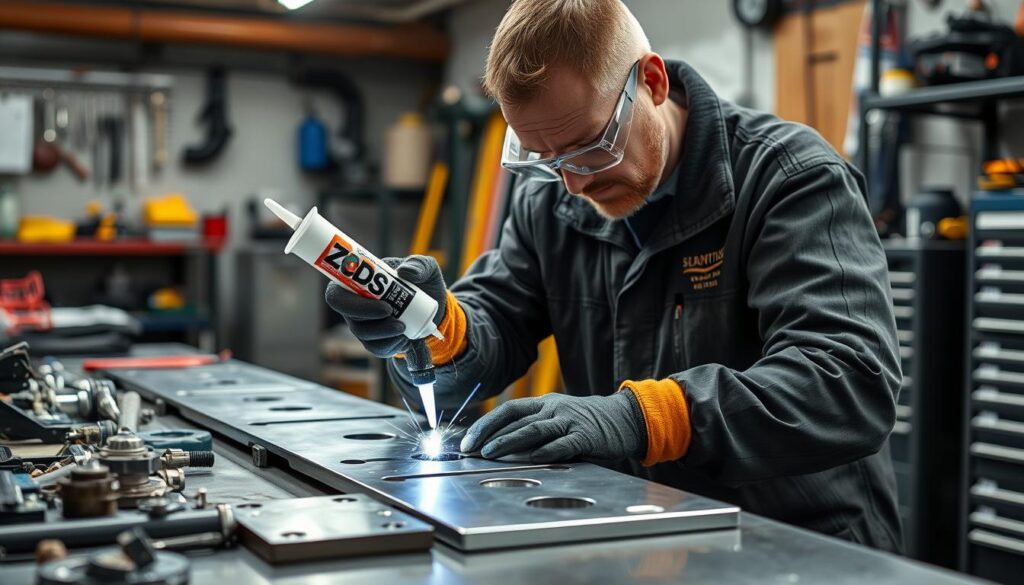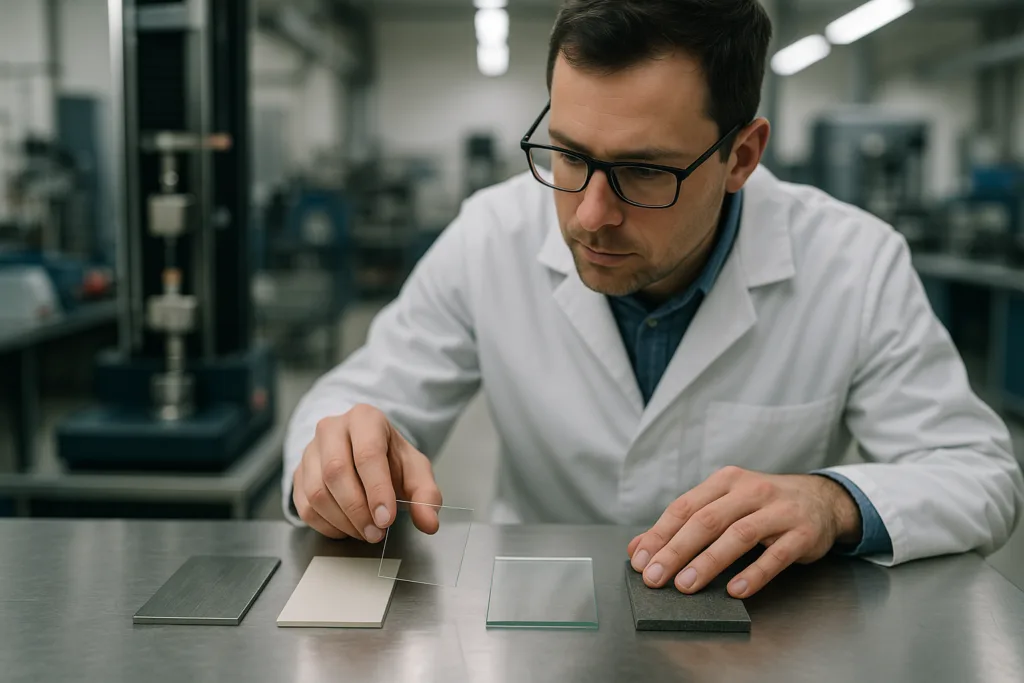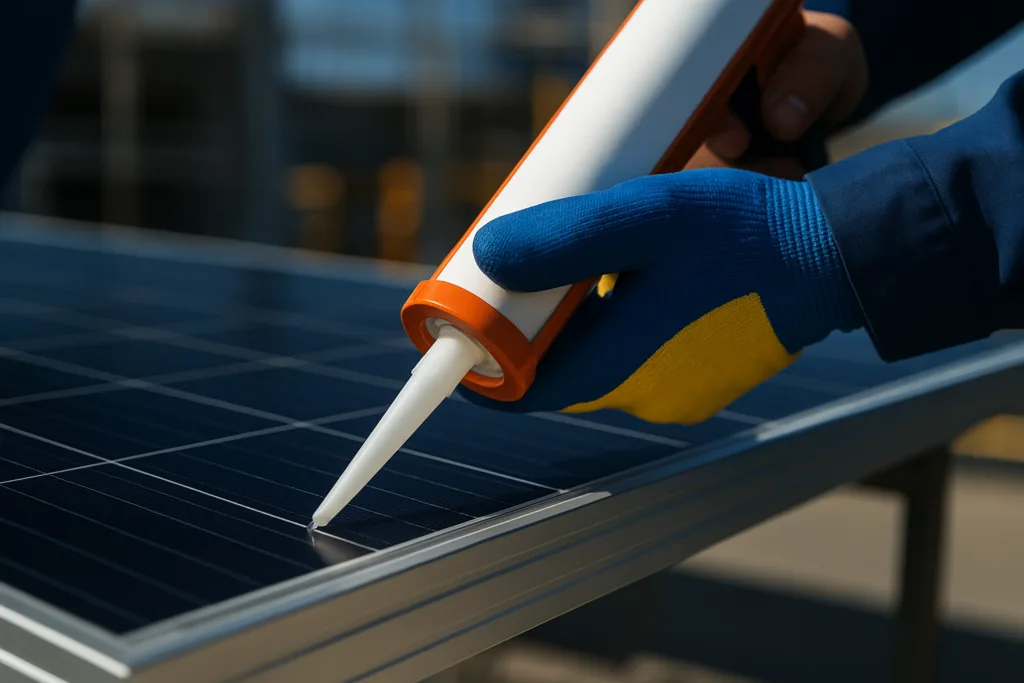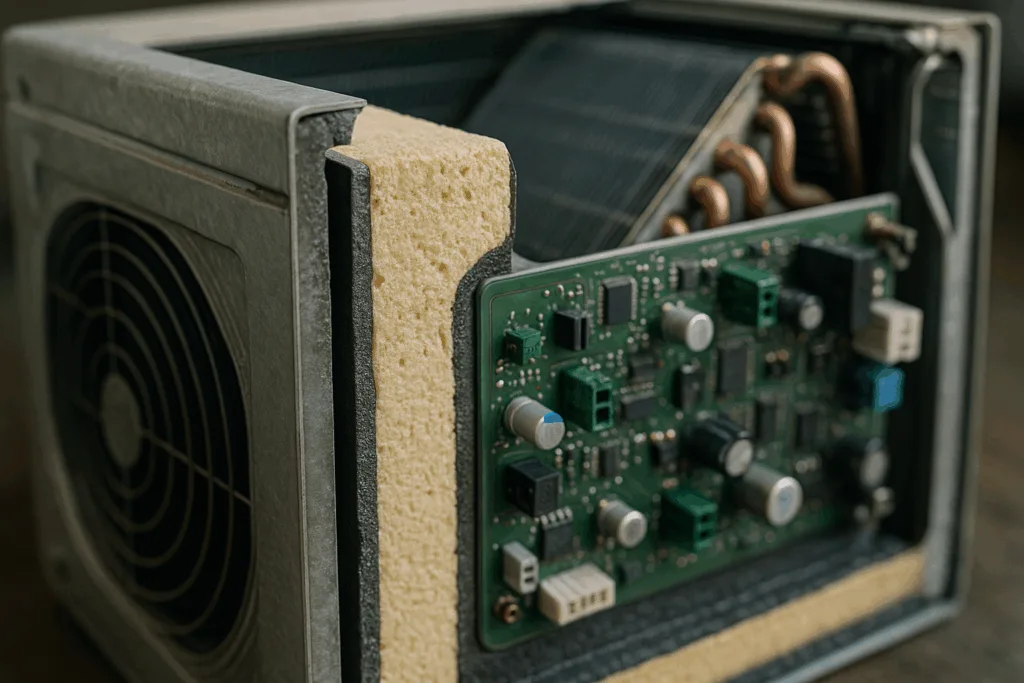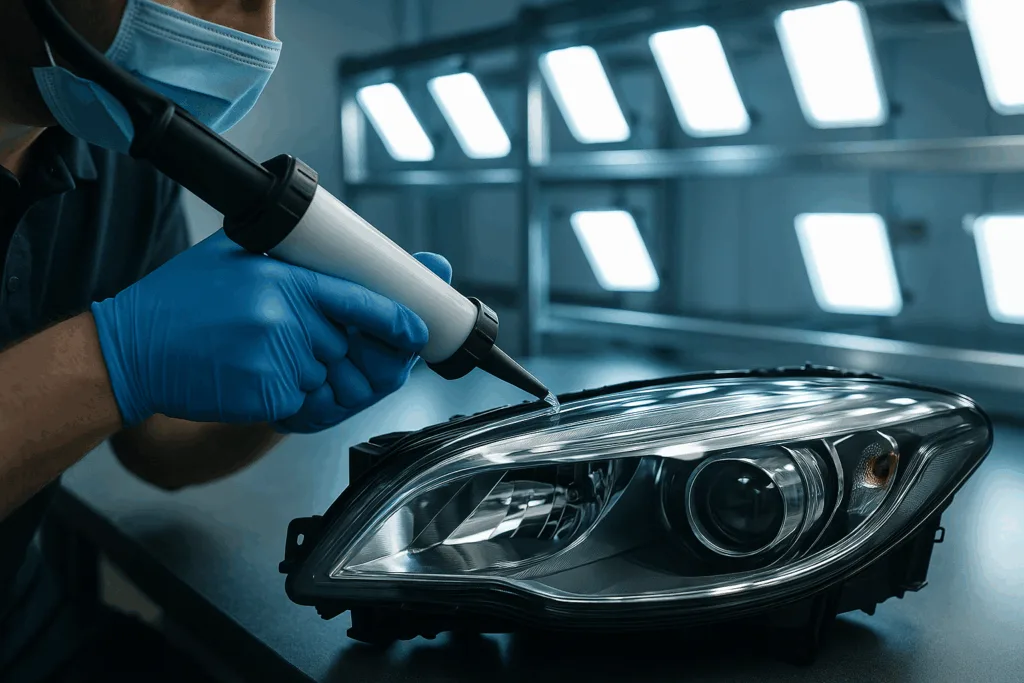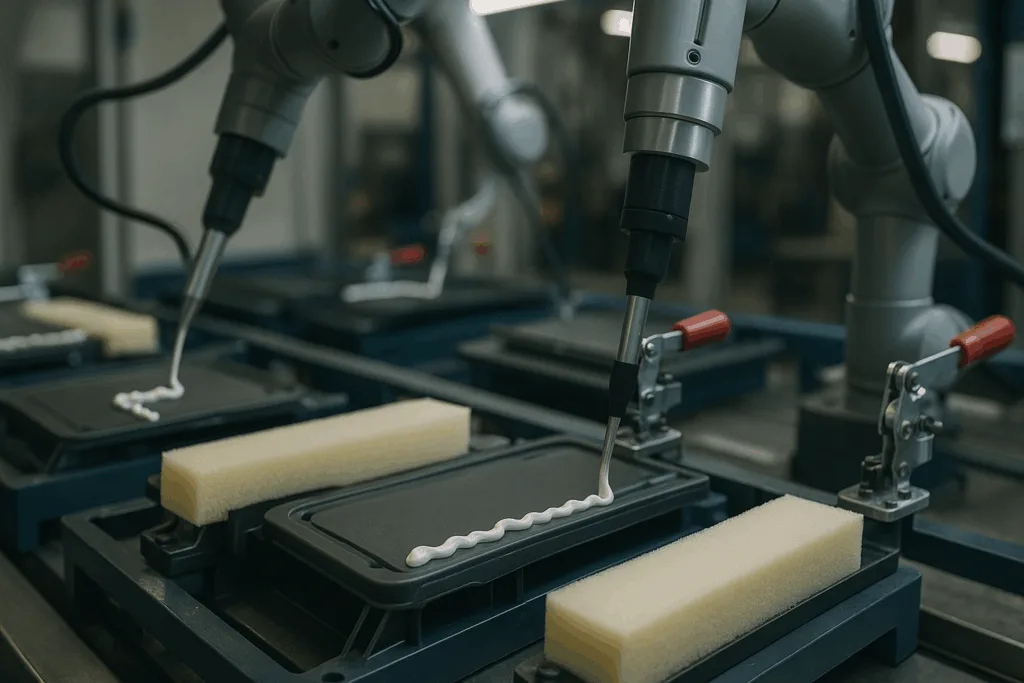In the world of vehicle repairs and improvements, how strong and secure the bond is truly matters. Automotive adhesive for metal is a dependable choice. It makes sure parts stick together well, no matter the situation. With cars becoming harder to build, a durable metal adhesive for cars is key. It’s better than old-school methods.
The need for high strength adhesive for metal in cars is huge. These glues make the car’s structure stronger. This means the car runs better and is safer. Let’s see why these glues are changing the car world for the better.
Key Takeaways
- Automotive adhesives for metal ensure a secure and durable bond.
- High strength adhesives contribute to the structural integrity of vehicles.
- Replacing traditional methods, these adhesives offer more efficient bonding solutions.
- Enhanced performance and safety are benefits of using metal adhesives.
- Essential for complex vehicle structures in modern automotive engineering.
Introduction to Automotive Adhesives for Metal
Automotive adhesives for metal bond vehicle metal parts together. They are stronger than bolts or welds. These special glues offer advantages like better strength and protection.
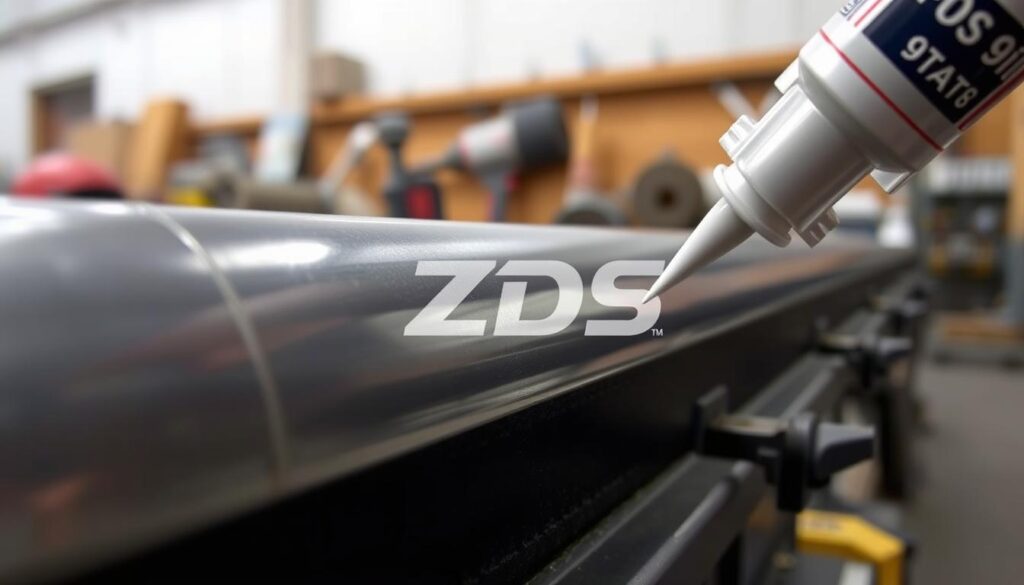
What They Are
A metal bonding adhesive is a chemical for joining metal parts. It’s important for many car parts. These glues spread stress evenly, unlike screws or bolts.
They make cars tighter and stronger. This leads to better performance and safety.
Why They Are Important
These adhesives make cars safer and last longer. They help cars use less fuel by making parts lighter without losing strength. This means cars can go longer on less gas.
They also make cars quieter. By reducing noise and shakes, the ride is smoother. So, car rides are not just safer, but more enjoyable too.
Benefits of Using Automotive Adhesives for Metal
The automotive industry gains a lot by using metal adhesives for vehicles. These adhesives improve both the car’s longevity and looks. Let’s explore the main benefits of using these adhesives.
Enhanced Durability
One major advantage of metal adhesive is the durability it adds to vehicles. It creates strong chemical bonds. These bonds can handle tough conditions without breaking down. They help vehicle components last longer by enduring vibrations, shifts in temperature, and harsh weather.
These adhesives also stand up well against fatigue and mechanical stress. This keeps the vehicle’s structure solid. For example, ZDS™ Structural Adhesives enhance the durability of parts like body panels and frames. You can learn more by visiting ZDS adhesive solutions.
Improved Aesthetics
Automotive adhesives also make cars look better. Welding can leave marks that need extra work to hide. On the other hand, adhesives let parts join smoothly without unsightly weld lines.
Because of this, cars can be designed to look sleeker and more modern. Using strong adhesives keeps the parts together and keeps the car looking good. This meets both the functional and style needs of the auto industry.
Types of Metal Adhesives Used in the Automotive Industry
The automotive industry uses different metal adhesives for strong bonds. Each adhesive has special features for certain jobs. Let’s look at the three main types: epoxy, acrylic, and polyurethane adhesives.
Epoxy Adhesives
Epoxy adhesives are strong and widely used in cars for high-quality bonding. They hold up against moisture and high or low temperatures. This makes them perfect for attaching metal parts together.
Acrylic Adhesives
Acrylic adhesives set fast, speeding up car making. They handle impacts and temperature changes well. This flexibility makes them useful for many tasks in car production.
Polyurethane Adhesives
Polyurethane adhesives are both flexible and tough. They work great for parts that move or shake, keeping bonds strong without losing strength.
Here’s a table that outlines the main features of these adhesives:
| Adhesive Type | Key Characteristics | Ideal Applications |
|---|---|---|
| Epoxy Adhesives | High strength, resistant to moisture and extreme temperatures | High-performance bonding, critical metal components |
| Acrylic Adhesives | Fast-setting, resistant to impact and temperature variations | Production processes requiring quick bonding, versatile applications |
| Polyurethane Adhesives | Flexible, durable, enduring elasticity | Applications with regular movement or vibrations |
How to Choose the Right Automotive Adhesive for Metal
Choosing the right automotive adhesive for metal is key to durability in the auto industry. When looking for the best metal adhesive, keep several things in mind.
The first thing to check is the temperature resistance of the adhesive. Cars go through huge temperature changes, needing an adhesive that can take the heat and the cold. This ensures the bond stays strong, no matter the weather.
Next, look at the load-bearing capacity of the adhesive. Different parts of the car handle different amounts of stress. Pick an adhesive that can support the weight and stress of the part it’s being used on.
It’s also vital to consider metal compatibility. Some adhesives work best with certain metals and might not suit others. Make sure the automotive panel bond adhesive matches the types of metal in your project.
“Ensuring a strong and long-lasting bond starts with choosing the right adhesive for the job. Always aim for products that meet your specific temperature, load, and metal compatibility requirements.”
ZDS™ is a trusted name for high-performance adhesives in the automotive field. They offer advanced adhesives like modified polyurethane and silane sealants for durability and safety. For details on ZDS™ products, check their official website.
Below is a quick guide to help you pick the best automotive adhesive for metal:
| Adhesive Type | Temperature Resistance | Load-Bearing Capacity | Metal Compatibility |
|---|---|---|---|
| Epoxy Adhesives | High | Excellent | Iron, Steel |
| Acrylic Adhesives | Moderate | Good | Aluminum, Stainless Steel |
| Polyurethane Adhesives | Low to Moderate | Fair | Various Metals |
By keeping these essential elements in mind and using experts like ZDS™, you’ll find the perfect metal adhesive for automotive use. This ensures bonds that are strong and meet all industry standards.
Top Automotive Metal Bonding Solutions from ZDS™
ZDS™ is a leader in metal adhesives for the automotive sector. Our adhesives are known for their strength and lasting performance. They’re specifically designed for the tough demands of the automotive industry.
Products Overview
ZDS™ offers a variety of automotive adhesives. They are made to form strong, lasting bonds. These adhesives can handle the harsh conditions of automotive settings.
- Conductive Adhesives: Ideal for electronic systems within vehicles, ensuring reliable electrical connections.
- Non-Conductive Adhesives: Perfect for structural parts where electrical conductivity is not required.
- High-Temperature Adhesives: Designed to maintain integrity under high heat, common in engine compartments.
Why Choose ZDS™
ZDS™ isn’t just known for top metal adhesive for automotive industry. We also offer major benefits:
- Quality Assurance: Our adhesives meet strict quality standards for peak performance.
- Innovation: We use the latest technology in our adhesive formulations for better bonds.
- Versatility: Our products cater to a wide range of uses within the automotive industry.
| Product Type | Main Benefits | Application Areas |
|---|---|---|
| Conductive Adhesives | Reliable electrical connections, strong adhesion | Automotive electronics, sensors, wiring systems |
| Non-Conductive Adhesives | Durable bonds, resistance to vibration | Body panels, structural parts, interior assemblies |
| High-Temperature Adhesives | Heat resistance, long-lasting performance | Engine compartments, areas with high thermal exposure |
Applying Automotive Adhesive for Metal: Step-by-Step Guide
To get a strong bond when using automotive adhesive for metal, you must pay close attention to detail. This guide will show you each step to take. Following these steps is critical for success.
Surface Preparation
Cleaning the metal surfaces well is the first step. You must remove grease, dirt, or rust. Use a good degreasing agent to make sure the area is totally clean. This makes sure the automotive adhesive for metal application can bond strongly.
Application Techniques
It’s very important to apply the adhesive the right way. Follow what the manufacturer says about how much to use and how to spread it. Some common ways to do this include using a caulking gun or adhesive sheets for bigger parts. For example, ZDS™ makes products just for these jobs. They’re easy to use and work really well. For more info on ZDS™, check out their automotive body adhesive solutions.
Curing Process
The curing step is key for a solid bond. Stick to the curing time and conditions the adhesive needs. Usually, this means keeping it at the right temperature and humidity. You might need to clamp the adhesive or support it while it cures. A good cure means better safety and efficiency for the vehicle.
| Step | Action | Details |
|---|---|---|
| 1 | Surface Preparation | Clean and degrease the metal surface. |
| 2 | Application | Apply adhesive as recommended using the appropriate method. |
| 3 | Curing | Ensure proper curing conditions are maintained for optimal bonding. |
By carefully following these steps, we make sure the automotive adhesives work their best. This leads to a dependable and strong bond for metal parts in cars.
Common Applications of Metal Body Panel Adhesives
Metal body panel adhesives are changing how we work on cars. These automotive metal bonding solutions make repairs stronger and cars look better. Here are some common uses.
Panel Bonding
To attach panels to a car’s body, we use metal body panel adhesive. This makes the car look seamless and adds to its strength. With top products like ZDS™, cars can last longer and stand up to weather.
Structural Repairs
For structural repairs, a good metal body panel adhesive is critical. These adhesives help fix and strengthen key parts of a car. They ensure the repairs hold up well over time.
Custom Modifications
For custom car work, reliable adhesives are key. They help add new features or change up the car’s look safely. This lets car designers get creative while keeping the car safe.
To wrap it up, choosing top-notch automotive metal bonding solutions from places like ZDS™ is vital. The right adhesives lead to better work in panel bonding, structural fixes, and custom jobs.
Comparison: Automotive Adhesive vs. Traditional Welding
In automotive repairs and making cars, the choice between adhesives and welding matters a lot. This part will compare both, helping you pick the right one for your needs.
Strength and Durability
Automotive adhesive for metal creates a strong, lasting bond. High-quality adhesives like ZDS™ polyurethane structural adhesives resist impacts well and last long. Welding, though strong, needs skill to avoid joint damage.
Application Time
Adhesive usage cuts down repair time, making the process simpler and faster. This efficiency reduces how long cars are out of use. On the other hand, welding takes more time and prep, delaying work.
Cost Efficiency
Choosing adhesives over welding can save money on materials and labor. Welding costs more due to the need for specific skills, equipment, and extra materials. Using ZDS™ adhesives can be a cheaper option without quality loss.
| Criteria | Automotive Adhesive | Traditional Welding |
|---|---|---|
| Strength and Durability | High, with excellent impact resistance when using quality adhesives | Strong, but dependent on technique and skill |
| Application Time | Faster, less labor-intensive | Time-consuming, requires extensive preparation |
| Cost Efficiency | More cost-effective in terms of materials and labor | Higher costs due to specialized skills and equipment |
In short, whether to use automotive adhesive for metal or weld depends on many factors. This overview shows that adhesives can offer strength, efficiency, and save money for your projects.
Safety Considerations When Using Automotive Adhesives for Metal
It’s vital to use automotive adhesives safely, for both the user and the project’s success. High strength adhesive for metal requires focusing on several factors. This is to reduce risks and ensure the glue works well.
First, make sure you’re in a space with lots of air moving through. Many adhesives give off fumes that are bad to breathe in for too long. Getting fresh air can lessen the chance of breathing in these fumes.
Wearing the right safety gear is also crucial. You need gloves, safety goggles, and sometimes, a respirator. This gear protects against skin problems and injuries to your eyes. It makes using the adhesive safer.
Learn about the safety data sheets for every adhesive you use. These sheets have important info on how to use, store, and deal with emergencies. Knowing this can help you act fast and right if something goes wrong.
How you throw out adhesive materials and their containers matters too. Make sure to follow your area’s rules for disposal. Doing this keeps the environment safe and lowers health risks.
Below is a simple guide on staying safe:
| Safety Aspect | Action Required |
|---|---|
| Ventilation | Ensure the area is well-ventilated |
| Protective Equipment | Wear gloves, goggles, and respirators |
| Safety Data Sheets | Review and understand all information |
| Proper Disposal | Adhere to local disposal regulations |
Following these safety tips makes using automotive adhesives both easy and secure. These measures ensure the safe and successful use of high strength adhesive for metal. The results are reliable and long-lasting.
Success Stories: Real-World Applications of ZDS™ Metal Bonding Adhesives
We always aim to show our ZDS™ adhesives’ top performance in real situations. Our customers’ success stories tell us how well our products work in cars.
Customer Testimonials
“After switching to ZDS™ adhesives, our automotive assembly line saw a big boost in efficiency and quality. The bond strength is top-notch, beating old methods.” — General Motors
“In our custom car shop, ZDS™ is key. Its easy use and quick cure time help us get cars out faster.” — West Coast Customs
Case Studies
Our automotive adhesive case studies show our solutions change the game. They dive deep into the challenges and victories with ZDS™, proving they’re reliable and effective.
| Case Study | Challenge | ZDS™ Solution | Outcome |
|---|---|---|---|
| Electric Vehicle Manufacturing | High-stress joints | ZDS™ Epoxy Adhesive | Enhanced joint strength, ensured safety |
| Luxury Sports Cars | Aesthetic integrity with strength | ZDS™ Acrylic Adhesive | Impeccable finish and durability |
| Heavy-Duty Trucks | Extreme load-bearing capability | ZDS™ Polyurethane Adhesive | Superior load handling, long-lasting performance |
Conclusion
Choosing the right automotive adhesive for metal is very important. It ensures strong, durable, and good-looking bonds in vehicles. The role of metal body panel adhesive and vehicle repair adhesive is crucial for secure and professional work.
We talked about different adhesives like epoxy, acrylic, and polyurethane. Each type has unique benefits for the automotive industry. We also discussed why automotive adhesives are better than welding. They offer stronger bonds, are quicker to apply, and save money.
Products from ZDS™ are leading in performance and reliability. We shared how to apply these adhesives safely and mentioned some success stories. If you’re looking for reliable automotive adhesive for metal, ZDS™ is a top choice for all your needs.
FAQ
What is automotive adhesive for metal?
Automotive adhesive for metal is made to stick metal parts together in cars. It makes a strong bond that holds up under stress, shakes, and weather.
Why is durable metal adhesive important for cars?
Durable metal adhesive keeps your car safe and sound for a long time. It makes car parts stick together stronger and lasts through wear and tear.
What benefits do metal bonding adhesives offer in the automotive industry?
In the auto industry, metal adhesives bring lots of pluses. They boost durability, look good, spread stress evenly, and seal tightly. This helps cars run better, last longer, and stay safe.
How do I choose the right automotive panel bond adhesive?
Picking the right adhesive means looking at how well it can handle heat, weight, if it works with different metals, and what you’re using it for. Reading product info and what the maker suggests can also guide you.
What types of metal adhesives are commonly used in vehicles?
Cars often use epoxy for its toughness, acrylic for quick setting, and polyurethane for flexibility. These are the top choices in automotive adhesives.
How does ZDS™ compare to other automotive metal bonding solutions?
ZDS™ stands out in the adhesive world for its strong, trusty, and cutting-edge products. It’s chosen often for its high quality and success in many car jobs.
What are some common applications of metal body panel adhesives?
These adhesives are great for sticking panels, fixing structures, and tweaks. They give a firm, reliable hold that boosts car looks and build quality.
Is it better to use adhesives or traditional welding for automotive metal bonding?
Each option has benefits. Adhesives smooth out stress, are quick to apply, and save money. Welding offers superior strength and endurance. Your project’s needs will dictate your choice.
What safety measures should I consider when using high strength adhesive for metal?
Be sure to have good airflow, wear safety gear, and know the product safety info. Always follow what the product maker says for safe and sound use.
What success stories exist for ZDS™ metal bonding adhesives?
ZDS™ has shown its worth in many real projects, as happy customers and case studies show. These success stories prove its trustworthiness and impact in fixing car issues.

